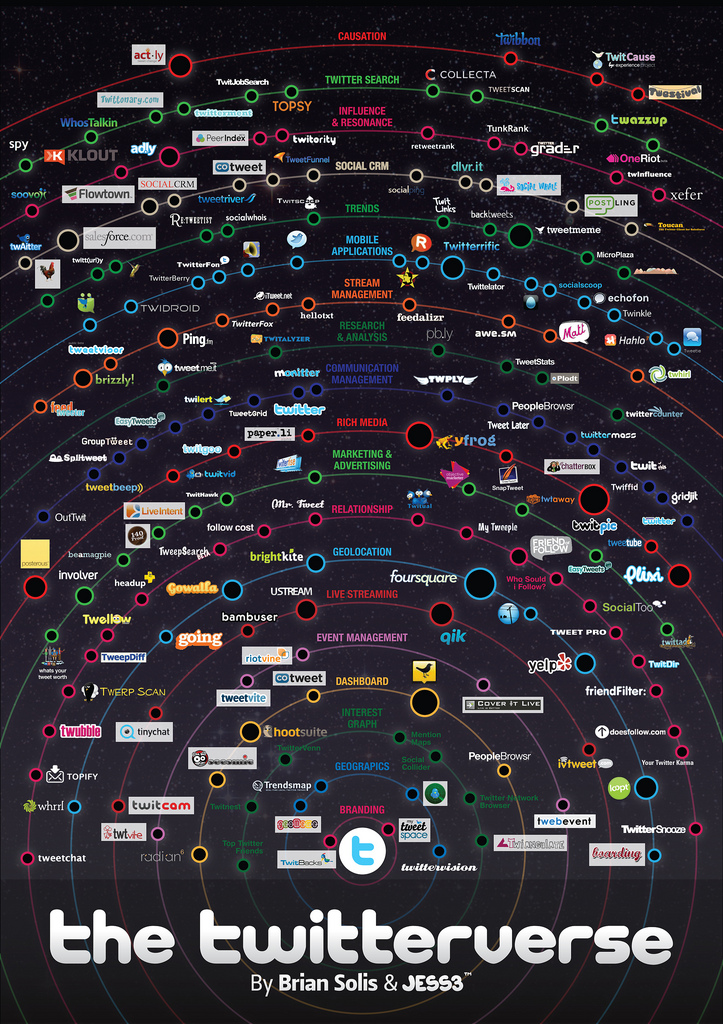When it comes to marketing, you need to understand the difference between tools, tactics and strategies. A blog is a tool. Writing blog posts is a tactic. Google AdWords is a tool. Publishing ads across multiple keywords is a tactic. Combine a number of tools and tactics together and you’ve got the makings of a strategy.
A strategy is driven by the goals you’re trying to accomplish. You need to identify your goals and understand them clearly. Quantify them. “We want to increase revenue” is clearly a goal. “We want to increase revenue by 25% in 6 months through increased sales of products A and B” is much better. Attach specific, measurable targets to your goals as often as you can so you’re more equipped to make rational, fact-driven decisions.
Don’t get hung up on the tools. Should you use Twitter, Quora, Facebook or blogging? Use the tools that are right for the goals you’re trying to accomplish. Chasing the newest shiny tool and scrambling to use it as quickly as you can is a fool’s errand if you don’t understand the benefits upfront. Experimentation is one thing; there are lots of advantages to experimenting, but rushing to implement a “shiny tool strategy” is silly. Worse, ignoring “older” tools because they’re no longer as shiny is shortsighted and tells me very clearly that you don’t understand marketing.
Take a look at this Twitterverse diagram produced by Brian Solis and JESS3. If you ever needed a clear indication of the glut of tools available and just how confusing they can be, this is it. How can you just pick a tool and think, “We need a strategy for that tool!” Wrong. Match goals to tools and tactics to design a proper strategy. Don’t assume you need a strategy for a specific tool because it’s shiny.
Using a tool well means understanding the tactics by which to maximize the use of said tool. Without an understanding of tactics, for all you know you could be using the wrong end of the hammer. Might still work, at least part of the time, or partially, but once you really know how to use a tool properly, with the right tactics, you can make real progress (or discover more quickly that the tool is the wrong one, not achieving your specific goals, and move on.)
When exploring how to improve marketing in your company, start at the very top with your goals. Define them. Write them down. Then investigate your marketing strategy, the tactics, and tools being used, and identify the problems. If you can’t figure this out, you’re in trouble. You won’t know what to change! Start by talking to customers, prospects and employees. Dig into how your company is perceived online. Take a look at the competition. A bit of analysis is a good thing. Get some analytics in place and start measuring what’s happening.
Jump down at this point and get right into the tools. List them all, with pros and cons, and do some research into what people are doing with them. So you’ve gone from the top (your goals and a 20,000 foot view of your current situation) to the tools of the trade. Pick the ones that you think are the best, and then get into the tactics you’ll use to maximize their value.
- Define Goals
- Identify Problems
- Pick Tools
- Implement Tactics
- Measure & Analyze
- Achieve Goals (or not)
Think of it more like a circle. Doing things in order doesn’t guarantee success but it significantly increases your odds. It gives you the opportunity to learn more quickly about what’s working and what’s not working, and adjust accordingly. Doing things out of order is absolutely like gambling; you may win occasionally, but your odds suck, and unless you’re one of the very few super-lucky ones, you’ll lose. And try not to mindlessly and rabidly chase the “shiny” tools for the sake of it. Tools are just tools. You need tactics and strategies for tools to be of any use.

 Founding Partner at
Founding Partner at 